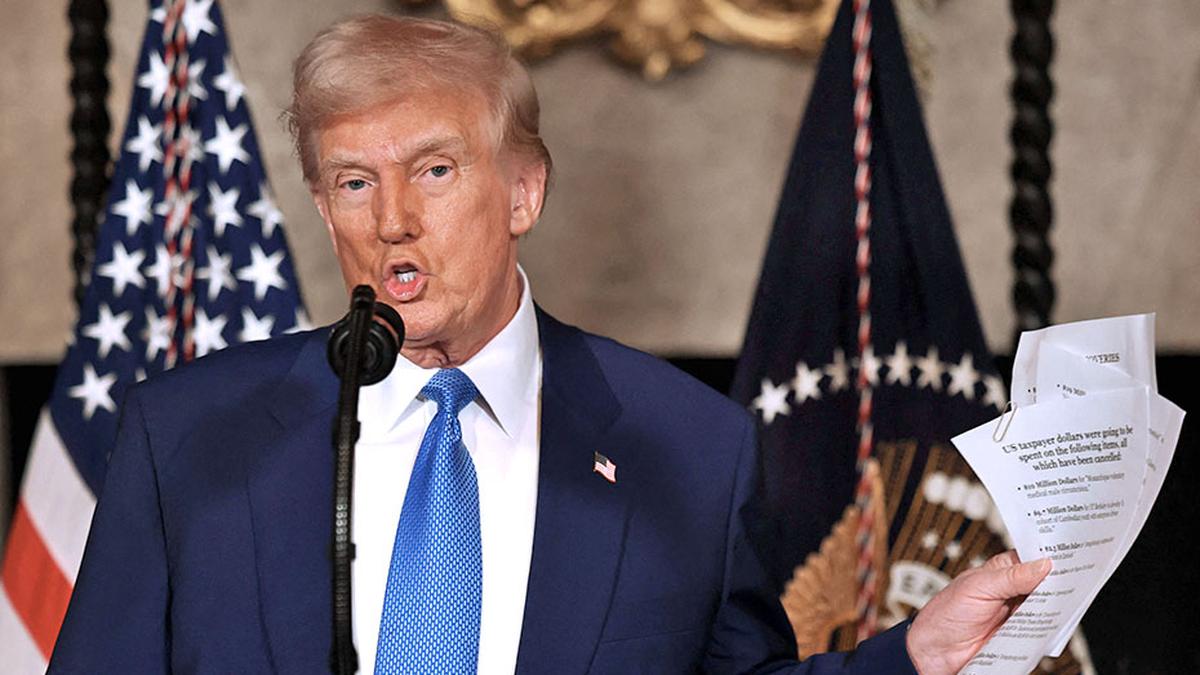The most debated government downsizing reform that has been implemented in recent history has been the Department of Government Efficiency (DOGE) initiative under the Donald Trump administration in its second term. The initiative aims to reduce U.S. federal spending, deficit, debt and interest burden, streamline government operations, and enhance government efficiency. The initiative was much in the news with the appointment of Elon Musk, to advise and guide the government on the initiative, and his declaration that the overall goal is to achieve a leaner government by cutting the deficit and reducing the number of federal agencies from over 400 to 99.
Root cause of deficit and debt
The need for a smaller government was felt by the Trump administration due to enormous government spending and deficits. The size of the U.S. government, measured by public expenditure as a percentage of GDP, on average, was 36.49% from 2001 to 2024. Surprisingly, this was the smallest among the seven major advanced economies (MAE). France (56.53%) had the largest government, followed by Italy (49.81%), Germany (46.64%), Canada (41.24%), the United Kingdom (41.09%), and Japan (37.56%). The size of the government in the U.S. has remained the smallest among the MAE for most of the last 25 years.
Yet, overall fiscal balance and government debt have been higher in the U.S. when compared to the MAE. In the triennium ending (TE) 2024, the U.S. had a fiscal balance and debt burden of (-)6.0% and 119.5% of GDP, respectively, compared to the figures of (-)4.1% and 108.6%, respectively, for the MAE. The underlying reason is the lower revenue collection in the U.S. The total revenue of the U.S. government as a percentage of GDP on an average was the lowest (30.55%) during the period 2001–2022 compared to France (51.48%), Italy (45.93%), Germany (44.93%), Canada (39.92%), and the U.K. (36.63%). Between 2001 and 2022, the U.S. has clocked the lowest tax-GDP ratio of 19.27% as against 28.59% for Italy, 28.12% for France, 27.99% for Canada, 26.89% for the U.K., 22.70% for Germany, and 32.74% for OECD countries.
Initiatives and outcomes
The several expenditure reforms the DOGE has implemented are the termination of unused federal government office space leases, cancellation of wasteful contracts, recovery of misallocated funds, federal workforce optimisation involving initiatives such as hiring restrictions, workforce reduction, and offering voluntary buyouts, deregulatory measures aimed at ensuring lawful governance and reducing red tape. There is also Artificial Intelligence-based monitoring of federal employee activity, productivity assessment, and detection of inefficiencies, identifying and consolidating overlapping functions across departments, and cutting down overseas humanitarian and development spending.
DOGE follows a transparent communication strategy by publicly sharing updates (on X or DOGE’s portal) on the outcomes. The total estimated expenditure savings from contract/lease cancellations and renegotiations, grant cancellations, fraud and improper payment detection and elimination, asset sales, employee reductions and regulatory changes have been $190 billion, which amounts to $1,180 per taxpayer. DOGE has made the distribution of government grants transparent through a payments portal, which allows citizens to see recipient-wise payments of federal grants.
DOGE’s Workforce Portal provides information on the agency-wise size of the U.S. government civilian workforce.
To streamline layoffs, it has implemented the “Workforce Reshaping Tool”, a modernised version of the Pentagon’s Automated Reduction in Force (AutoRIF) software, which assists in terminating federal employees based on criteria such as seniority and performance. So far, approximately 2,60,000 federal employees have been laid off, retired early, or accepted buyouts. Several federal regulations were repealed and modified, with a cost savings of $30.1 billion due to reduced regulatory compliance; also, 1.8 million words have been deleted from the rules of several Federal regulations. DOGE publishes a unique unconstitutionality index (UI) measuring the extent of bureaucracy’s role in shaping federal policy. As per UI, for every law passed by Congress in 2024, there were about 19 rules created by the bureaucracy.
The path ahead
However, DOGE’s journey has seen an unexpected turn after Elon Musk publicly disagreed with U.S. President Donald Trump over the provision incorporated in the much-debated One Big Beautiful Bill (OBBB) for removing tax credits offered to purchase electric vehicles. The OBBB is a legislative extension of the DOGE reform, as it aims to embed multiple fiscal priorities and DOGE-style government efficiency reforms into a single federal law. Ironically, by opposing OBBB, Mr. Musk contradicted his initiatives as an adviser to DOGE. However, the bigger challenge facing the DOGE initiative is that its extended form, the OBBB, is unlikely to resolve the U.S.’s deficit and debt problem, as the tax cuts proposed in the OBBB far exceed the spending cuts, leading to an addition of $3.2 trillion to the U.S. national debt over the next decade.
Currently, the U.S. has the lowest and below-OECD-average corporate tax rates among the MAE, lower effective tax rates on the rich, and tighter secrecy laws that enable tax evasion by wealthy individuals and corporations. Therefore, unless efforts are made to boost government revenues, Mr. Trump’s ‘One Big Budget Bet’ of reducing America’s deficit and debt through DOGE-style expenditure reforms is unlikely to pay off.
Sthanu R Nair teaches Economics and Public Policy at the Indian Institute of Management Kozhikode, Kerala. Pratik Sinha is a consultant for a multinational firm. He was an Assistant Director, Nehru Yuva Kendra Sangathan, Ministry of Youth Affairs and Sports, Government of India
Published – August 11, 2025 12:08 am IST
